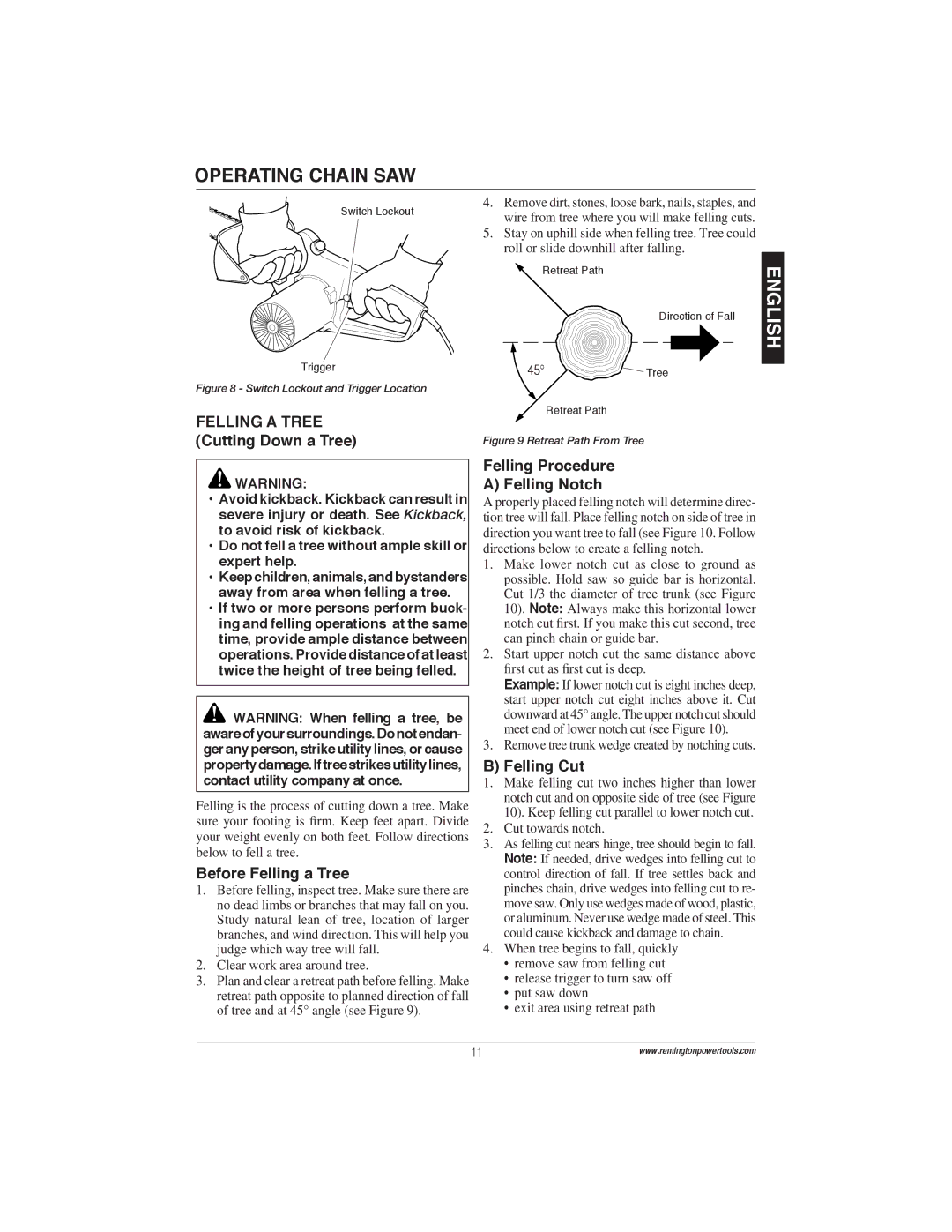ES1514US, ES1514AS, ES1512US, 100089-06A specifications
Remington Power Tools stands as a prominent name in the arena of outdoor equipment, particularly known for their lawn and garden tools that combine efficiency, power, and ease of use. Four standout models in their lineup are the 100089-06A, ES1512US, ES1514AS, and ES1514US. Each of these tools showcases unique features catering to diverse user needs while maintaining Remington's reputation for quality.The Remington 100089-06A is particularly appreciated for its remarkable versatility. This model comes equipped with a powerful 33cc two-cycle engine, making it an excellent choice for tackling tough yard tasks. The user-friendly design ensures easy start-up, and the ergonomic handle reduces user fatigue, allowing for prolonged operation without discomfort. Additionally, its attachment capability allows users to customize the tool based on their specific gardening needs.
Moving on to the ES1512US, this electric chainsaw is engineered for precision cutting. It features a robust 12-amp motor that provides sufficient power for various cutting tasks. The tool's lightweight design makes it accessible for both seasoned professionals and novice users. Its low kickback 12-inch bar and chain ensure safety while delivering smooth and efficient cuts. Plus, the tool is equipped with a tool-less chain tensioning system, allowing for easy adjustments on the fly.
The ES1514AS is another electric chainsaw, but with enhanced specifications. It steps up with a 14-inch bar, making it ideal for larger branches and logs. This model also carries a 15-amp motor, which enhances its cutting power substantially. One of its key technologies is the automatic oiler, which ensures that the chain remains lubricated, reducing friction and extending the life of the tool. It’s designed to operate quietly, making it a great choice for residential areas.
Lastly, the ES1514US shares many features with the ES1514AS but is distinguished by its extended user-friendly characteristics, ensuring maximum efficiency and comfort. With an ergonomic handle and a lightweight design, it provides the convenience needed for extended periods of work without fatigue. Both ES1514 models boast a safety brake feature that immediately halts the chain movement upon encountering resistance, further ensuring user safety.
In conclusion, Remington's 100089-06A, ES1512US, ES1514AS, and ES1514US showcase a blend of power, safety, and user-friendly innovations. Each tool is tailored to meet different gardening and lawn care needs, making them invaluable assets for both casual gardeners and dedicated landscapers alike.

